Discover the common and widespread grasses of North East England and start identifying your own in a new series of blogs by NHSN Senior Naturalist, James Common
May marks the beginning of the ‘grass season’ and ushers in an exciting few months, as countless species begin to bloom across verges, meadows, waste ground, and nearly every habitat in between. While grasses may seem intimidating at first – and there certainly are many – the good news is that numerous common and familiar species can be spotted regularly by budding botanists going about their daily business. Many of these grasses are quite distinctive, and with a little patience, it’s entirely possible to tell them apart.
In this new blog series, we’ll explore 25-30 widespread and recognisable grasses, offering identification tips and focusing on a different habitat each week to help you feel confident identifying your finds.
This week, we’ll start with six familiar grasses of waysides and rough ground, all of which should be in flower either now or in the coming weeks. How many will you spot on your travels this summer?
#1 Annual Meadow-grass
We’ll start with the commonest grass of all: Annual Meadow-grass Poa annua.
This adaptable species can be found just about anywhere – from pavements and walls to rough ground and the grassy margins of verges and roadsides. Conveniently, it flowers almost all year round, from late November to June, making it possible to find and identify at virtually any time.
A small and distinctive grass, this one is easily recognised by its pyramidal-shaped panicle, which features one to four spreading branches at each node (the point on the stem where branches emerge). Its spikelets are pale green, sometimes flushed with pink or purple, and contain two or more florets without awns. The leaves are hairless and may be either pointed or slightly rounded at the tip.
These characteristics combined with its diminutive stature make Annual Meadow-grass relatively easy to distinguish from the two larger meadow-grasses we’ll explore in a later post.
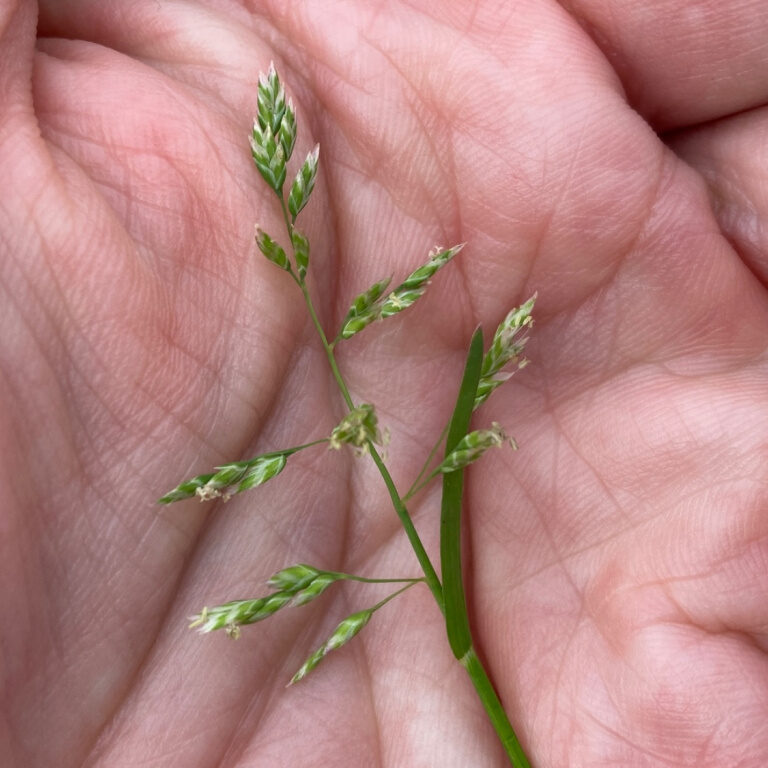
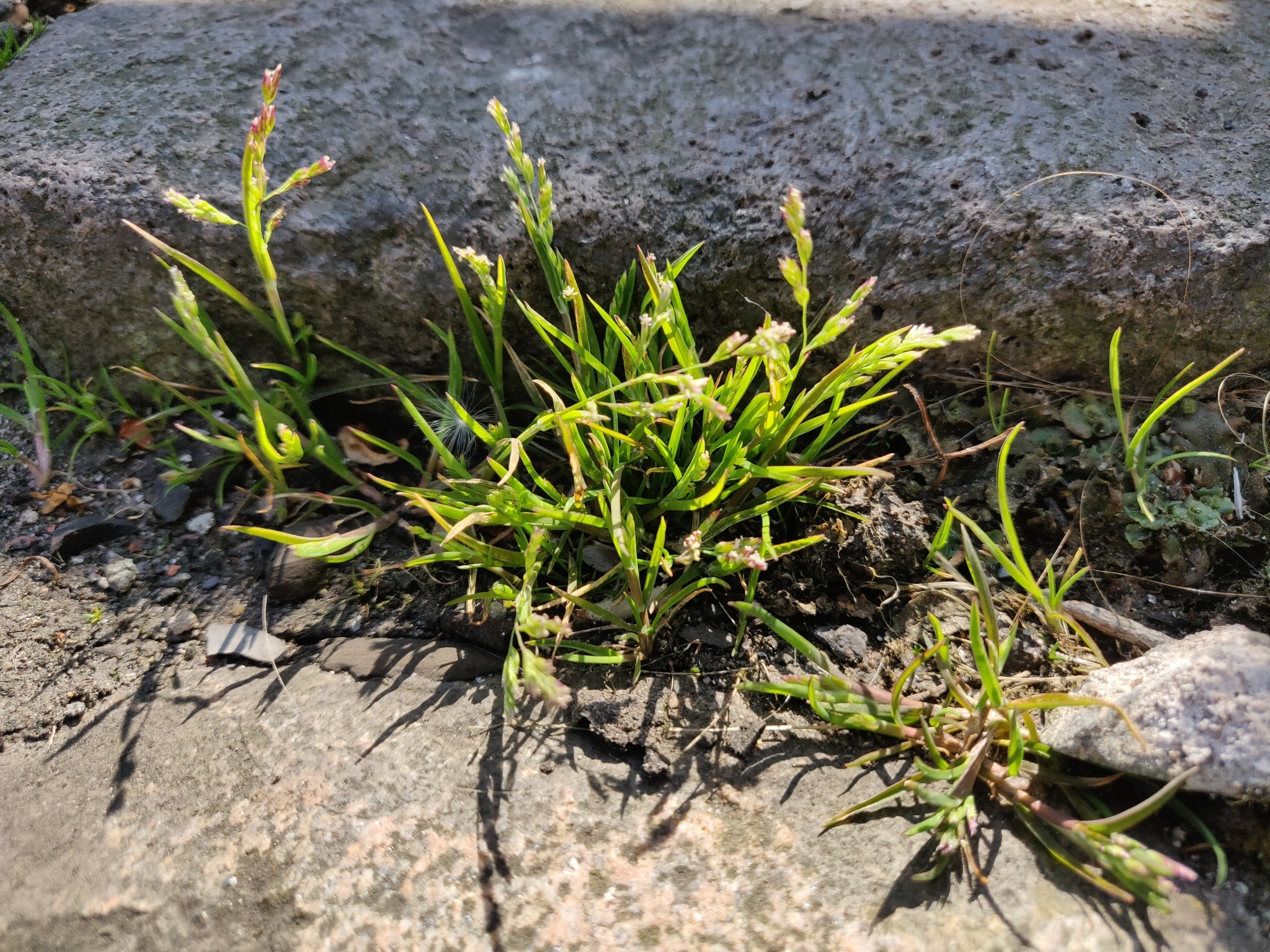
#2 Cock’s-foot
Cock’s-foot Dactylis glomerata is a grass that needs little introduction, and it can be encountered almost anywhere grassland has been allowed to develop.
This is a robust, almost hairless plant, with rough, grey-green leaves, that in good conditions can grow up to around 1 metre tall. Its panicle is distinctly branched, with a single branch at the lowest “whorl,” and flattened, green or purple-tinged spikelets clustered densely at the tips of each branch. Altogether, the inflorescence bears a strong resemblance to a chicken’s foot – hence the common name.
Another useful feature is that the bases of the stems are compressed and often slightly winged, which can help confirm your identification.
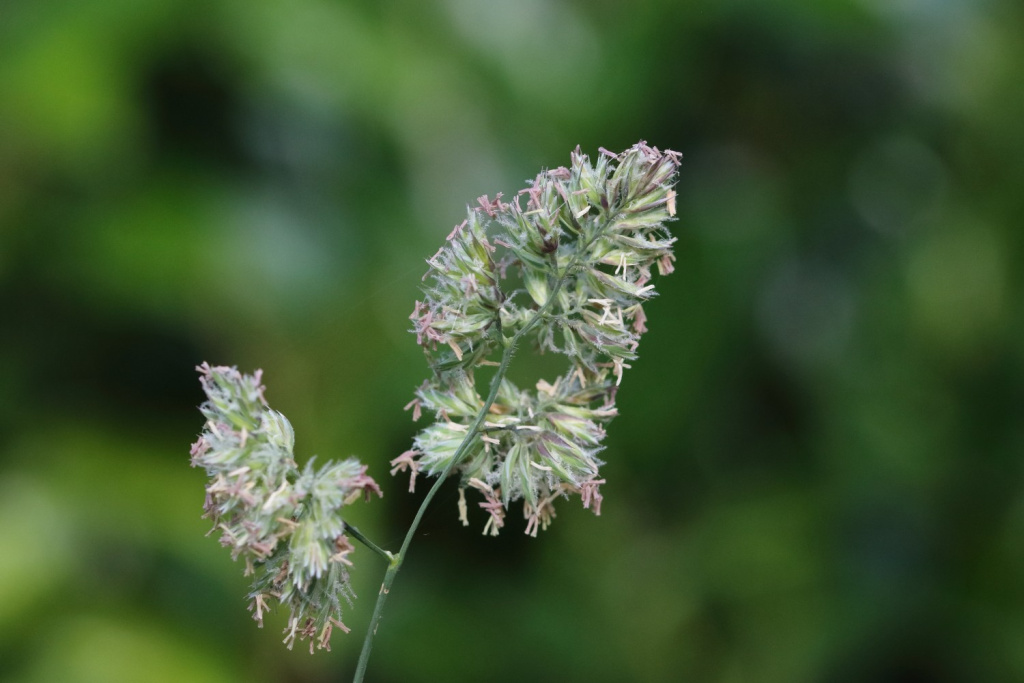
#3 Barren Brome
An annual grass of roadsides, railway banks, waysides, gardens, and waste ground, Barren Brome Anisantha sterilis is particularly interesting as one of many archaeophyte plants found in the British countryside – meaning it was introduced to our shores before 1500 AD. Today, it is common across most messy or untended spaces.
One of the key features to look for is its distinctive, loose, drooping panicles, with rough branches that are much longer than the attached spikelets. The spikelets themselves are noticeably flattened and V-shaped, each one sporting a long, hair-like awn.
The leaves of Barren Brome are coarse and hairy, measuring 2–7 mm wide, and are often spirally twisted. The leaf sheaths are rounded and hairy, while the ligule is long and ragged.
Although the Brome grasses include a number of rarer species that may cause confusion, this one is by far the most widespread.
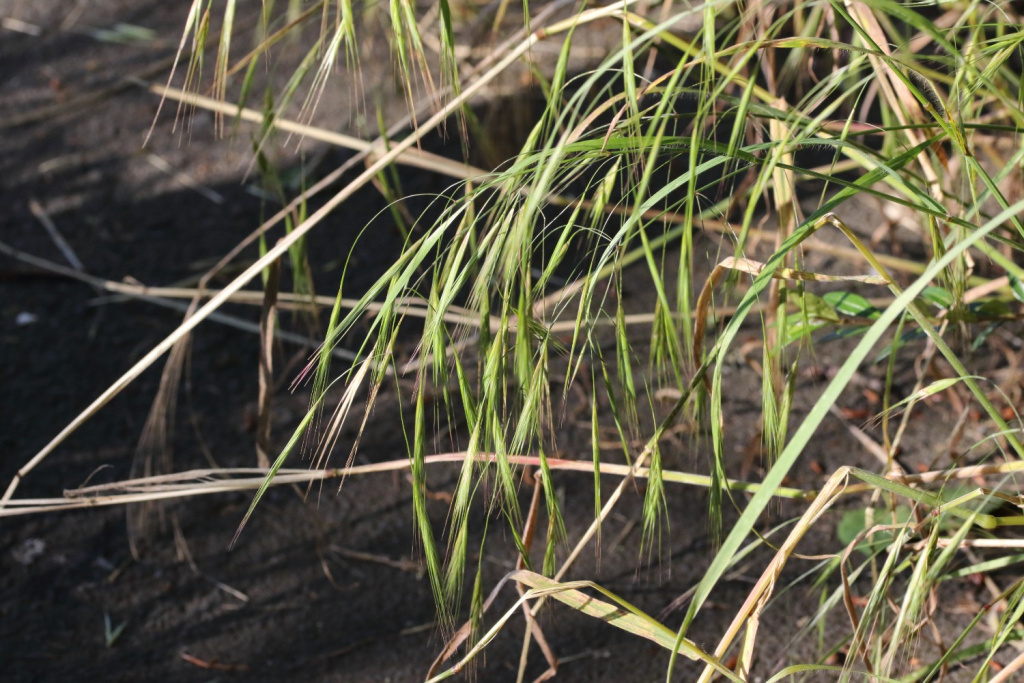
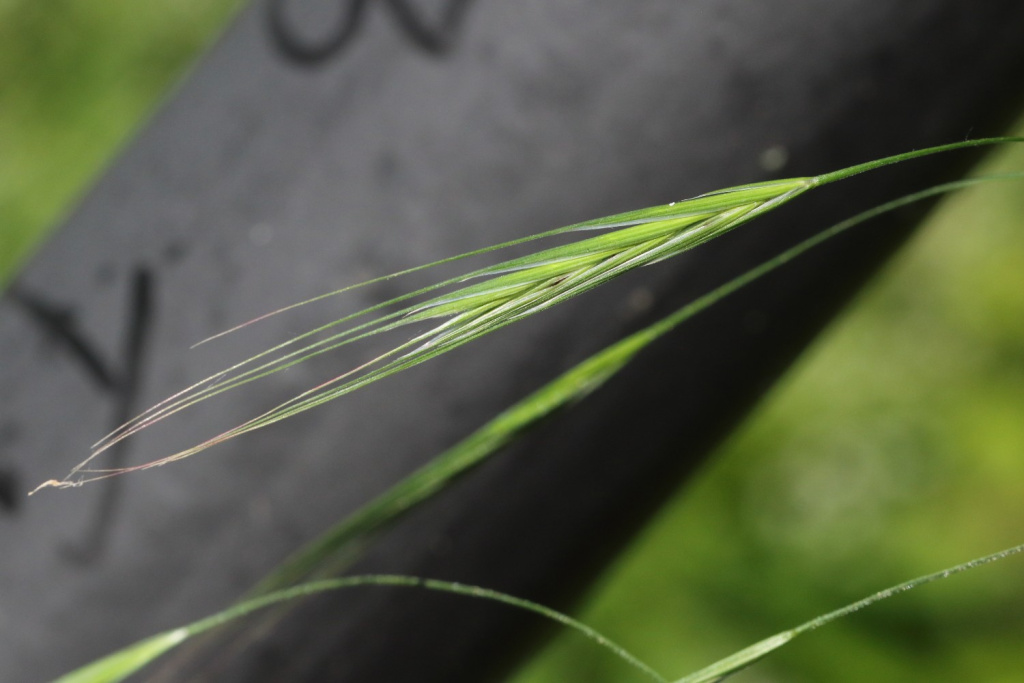
#4 False Oat-grass
False Oat-grass Arrhenatherum elatius is a tall and exceptionally common grass, often forming dominant ground cover along roads, hedgerows, and bridleways.
It has a characteristically “oaty” appearance, with a branched panicle that tends to close up after fertilisation, creating the look of a long, gracefully arched spike. Each spikelet bears a long, bent awn that projects nearly the entire length of the spikelet – an eye-catching feature useful for identification.
The leaves are 4–10 mm wide, usually hairless or only slightly hairy underneath, and the ligule is membranous, short, and rounded at the tip.
Another helpful clue for identification lies underground: False Oat-grass has distinctive yellow-orange roots, which may also be swollen into small, bulb-like structures.
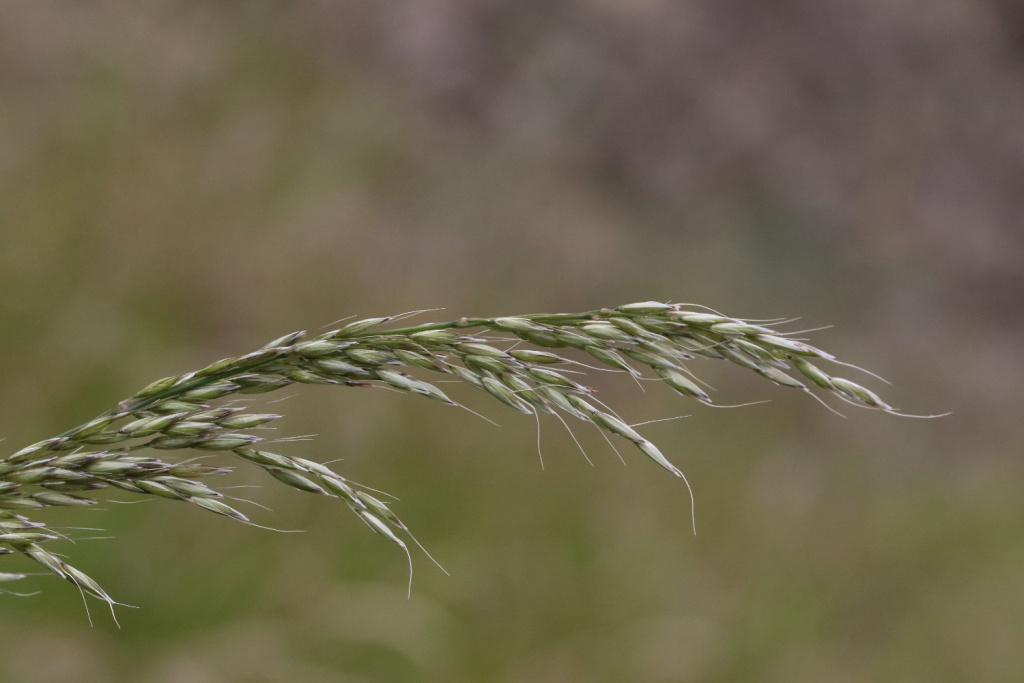
#5 Soft Brome
A common plant of roadsides, dry grasslands, and waste ground, Soft Brome Bromus hordeaceus is a wonderfully hairy grass – indeed, every part of the plant is hairy, including the leaves and spikelets.
It features a distinctive branched panicle, with each branch typically bearing just one or two rounded, chubby spikelets. Each spikelet is longer than its stalk and contains three or more awned florets.
Additional useful features include rounded, hairy leaf sheaths and a medium-length ligule with a ragged tip. Habit can also aid identification with Soft Brome often growing in a very upright form, lacking the characteristic drooping habit of Barren Brome, for instance.
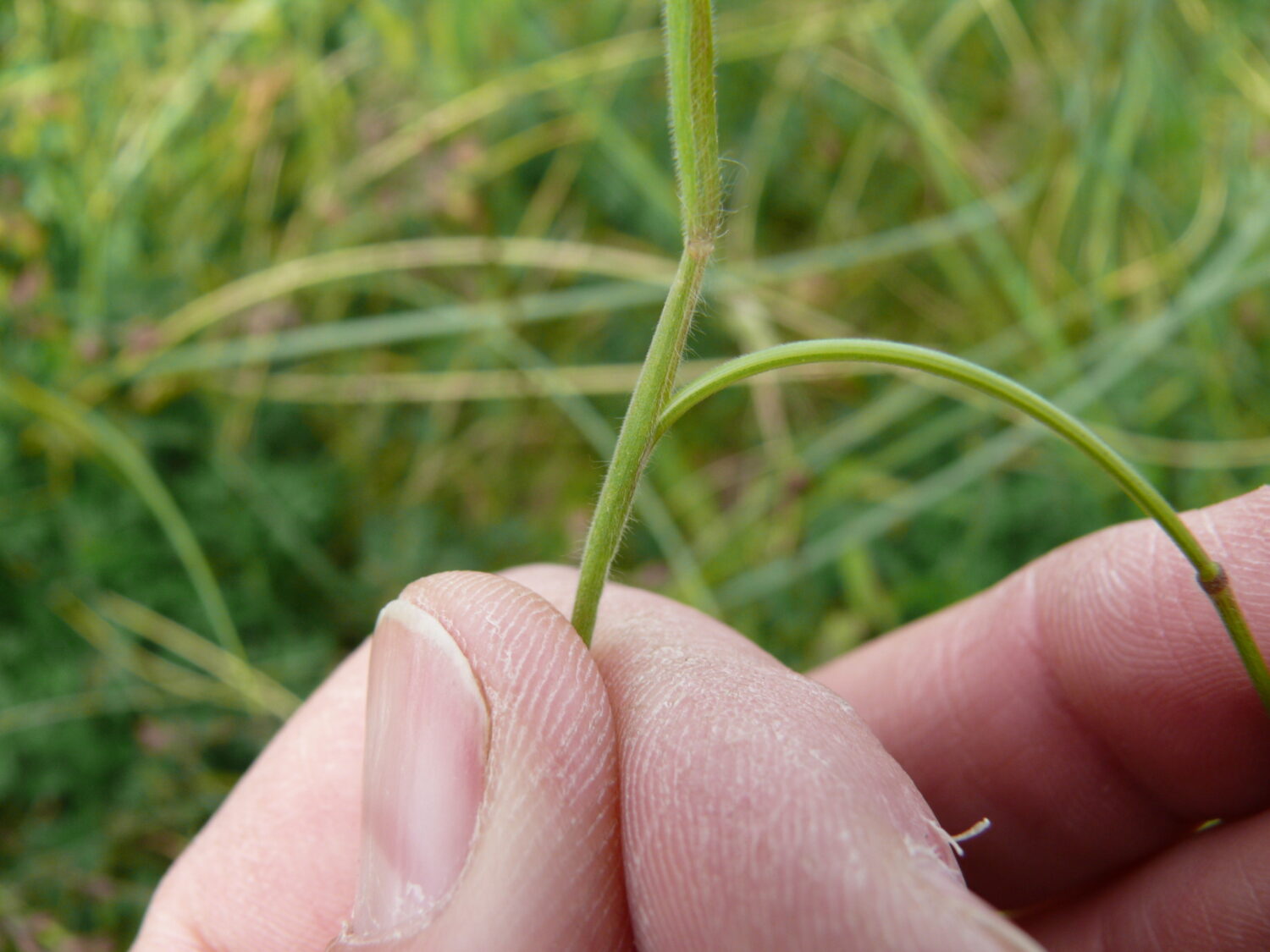
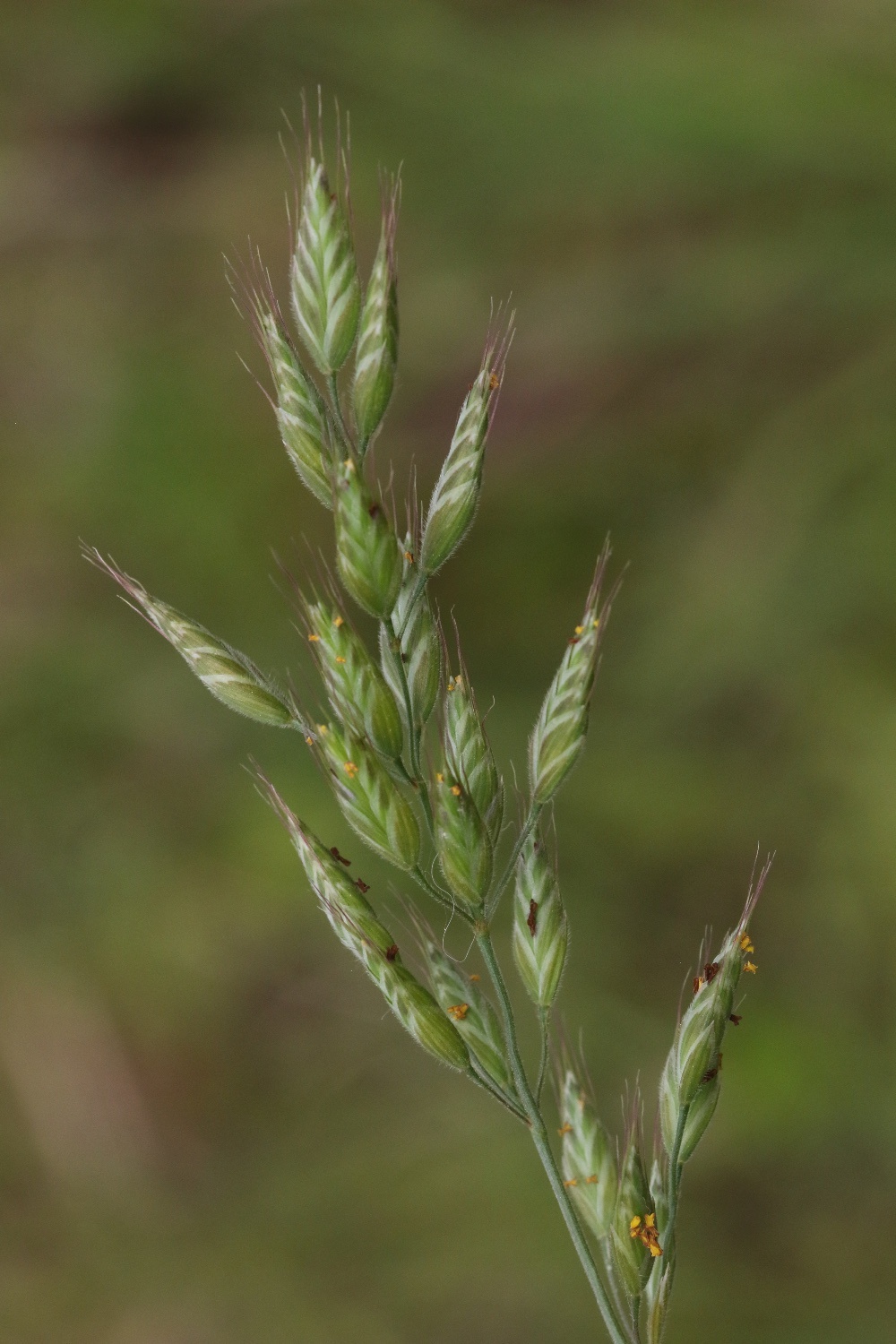
#6 Tall Fescue
Tall Fescue Schedonorus arundinaceus is the least abundant grass on this list, but it’s definitely out there. You’re most likely to find it on verges, roadsides, and rough ground bordering other types of grassland. It is a large, burly grass, often reaching up to 2 metres in height!
With this species, the flowers are less helpful for identification than in other grasses. Instead, focus on the leaves and sheaths. The leaves are stiff and broad (up to 10 mm wide) with distinctively rough edges, and the stem base is enclosed in a tough, pale sheath. Notably, this sheath ends in two wing-like auricles, each bearing a few bristles along the margin. These hairs are often visible in young plants and are key in distinguishing it from the similarly robust Meadow Fescue, which has hairless auricles.
If you do look at the flowers, check the lowest whorl: in Tall Fescue, it typically has two branches, and the shorter branch bears three or more spikelets. This contrasts with Meadow Fescue, where the shorter branch usually has only one or two spikelets.
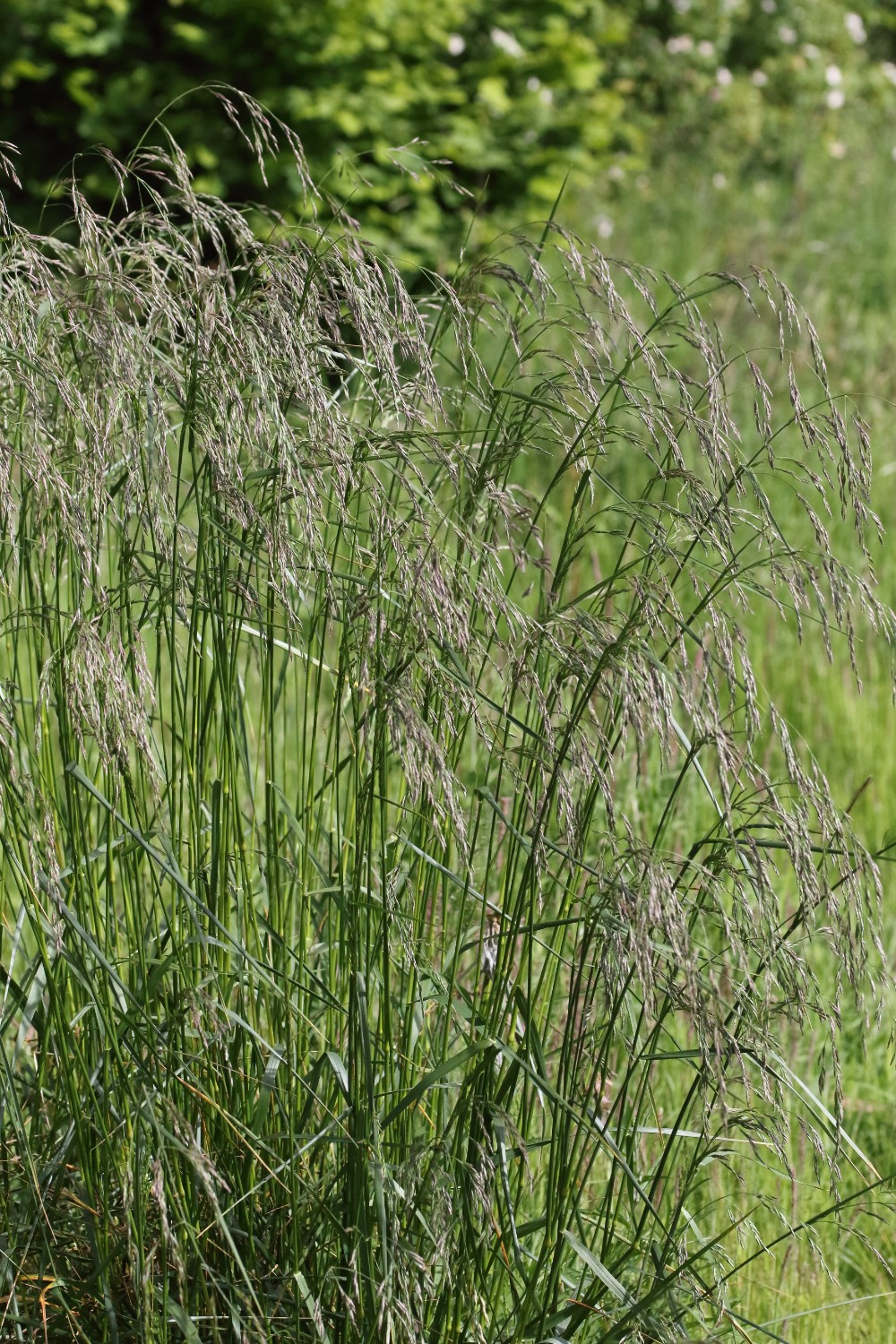
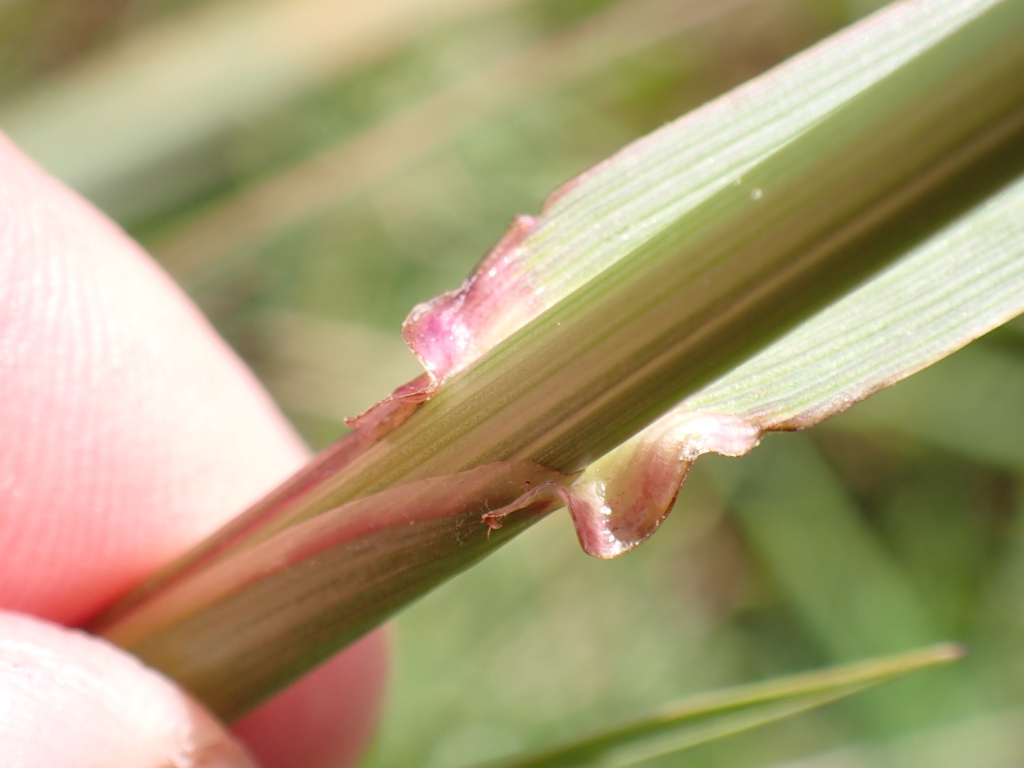
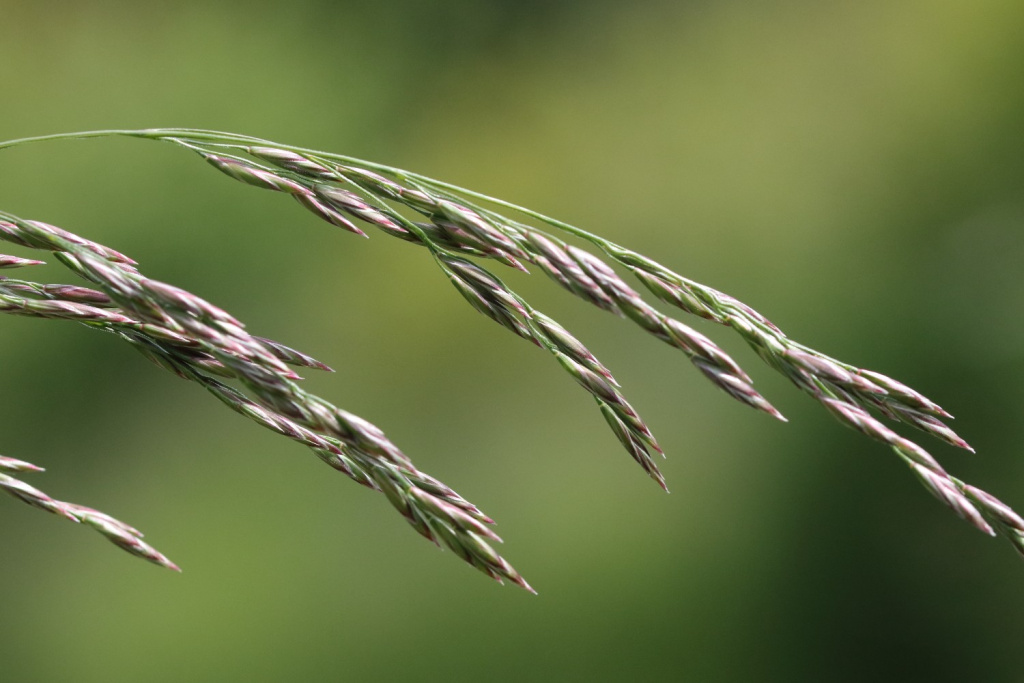
And there you have it – a whistle-stop tour of six widespread, weedy grasses found along waysides and in rough ground. We’ll revisit these habitats later in the season, but next, keep an eye out for a new post exploring the common grasses of meadows and urban grasslands.